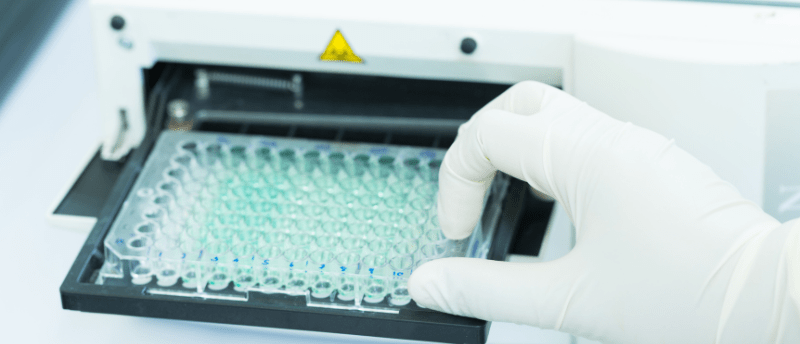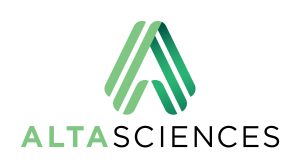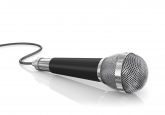Infographic review: automation in the bioanalytical laboratory

Bioanalysis Zone and Altasciences (Québec, Canada) have explored the role of automation in bioanalytical laboratories through a recent survey, completed by professionals working in the pharmaceutical and biotechnology community. The infographic explores the participants’ overall perspective of automation technology and its benefits, as well as expectations for future use.
Over the last two years, bioanalytical laboratories have seen increased interest in automated technologies throughout drug development and the disruptions caused by the COVID-19 pandemic have accelerated the movement towards automation. Sample preparation, analyte extraction and ligand binding assays are examples of processes that frequently involve automation, where the goal would be to increase sample throughput, improve data integrity and reduce errors. Repetitive and time-consuming tasks are the primary targets for automation; however, we are now seeing automated technology being integrated into various bioanalytical steps.
This summary is based on survey responses from the following regions: North America (55%), Asia (20%), Europe (16%) and others (9%). Individuals working in the biotechnology sector made up 22% of respondents and the pharmaceutical sector made up 30%, from small to large pharma. Remaining participants worked in academia (14%), as equipment vendors (12%), bioinformatics (7%), diagnostics (7%), CRO/CMO (4%) and as healthcare practitioners (4%). Scientists (31%), Executives (17%), Principal Scientists (14%) and Directors/Associate Directors (18%) made up the majority of job functions amongst the participants. Other job functions included President/Vice President (7%) and others (13%).
The extent of automation within bioanalysis
Respondents associated bioanalytical automation most with automated technology and instruments, with automated data analysis and reporting also being strongly linked. Interestingly, miniaturization was associated least with automation, despite automation being an essential tool for achieving assay reliability at small scales by reducing human-prone errors [1].
Approximately one-quarter of respondents reported that less than 10% of the assays currently developed in labs utilized automated technologies. Looking at the data more closely, 35% of respondents from Asia utilized automated technology in less than 10% of assays compared to 23% of American and European respondents. Though more than 40% mentioned that at least one assay out of three utilized automated technologies, 19% of respondents said that more than 50% of assays utilized automated technologies and only 9% reported more than 70% automation. In our survey, respondents using >71% automation were exclusively from North America and Europe. This disparity in automation between regions may be indicative of inequalities in resources and training.
The lack of expertise, training opportunities and qualified staff to maintain and troubleshoot automated instruments combined with the overall cost of equipment have been proposed as likely limitations to automation progression [2]. These barriers may offer an explanation as to why automation is not widespread throughout the bioanalytical community currently. Automating existing processes to match the researcher’s comfort level with the technology and replacing the most repetitive and time-consuming manual tasks have been suggested as the best ways to integrate automation technology [2].
Benefits and impact of automation
Saving time and improving the reproducibility of data were the leading projected improvements of automation, with 67% of respondents anticipating these improvements when considering drug development advancements. Saving costs (54%) and improving data quality (48%) were also considered important benefits by the participants. Decreased turnaround times were regarded as the least likely improvement, with approximately one-third of participants anticipating this benefit of bioanalytical automation, despite evidence for this in recent literature [3,4].
Implementation of automated workflows by a CRO was chosen by our participants as the most important feature for regulated bioanalysis, with approximately 48% of respondents reporting this as the most important consideration when selecting a CRO. This demonstrates the value of automated workflows to researchers and the necessity for a CRO to dedicate time and resources to automated technologies. Laboratory information management systems (LIMS) and electronic notebook systems (ELN) were also key considerations influencing CRO selection.
When transferring a technology to a CRO, the majority of assays were in 96-well plates (60%) or 12- or 24-well plates (24%). Tubes (10%), 384-well plates (5%) and others (1%) made up the remaining sample formats. Ensuring that the most popular sample formats are compatible with the technologies utilized by the CRO is essential for efficient processing and may direct the investment into new automated technologies.
How appropriate is automation?
When considering extraction methods for regulated bioanalysis, protein precipitation (PPT) (47%), liquid-liquid extraction (LLE) (44%) and solid phase extraction (SPE) (42%) were deemed the most suitable for current automation technologies. In comparison, only 19% of participants felt nucleic acid extraction is a suitable method to be automated. Considering the demand for nucleic acid detection on an immense scale due to the COVID-19 pandemic, and the reliance of this detection on automated technologies [5,6], it is surprising that so few participants considered this an appropriate method for automation.
For ligand binding assays, quantitative ELISA (38%) was regarded as the most appropriate assay for current automation technologies, followed by immunogenicity assays (18%). PCR, cell-based assays and electrochemiluminescence (MSD) were regarded as the most suitable ligand binding assays for current automation technology in bioanalysis by 10% of participants. Flow cytometry (3%) was considered the least suitable method, with biomarker panels (multiplex) (6%) and oligonucleotide quantitation (5%) also being considered less suitable for current technologies.
Interestingly, high-throughput flow cytometry (Intellicyt® iQue) was considered the third-most important high-throughput technology for a CRO to have for regulated bioanalysis. Liquid handlers (Hamilton, Beckman, Tecan, etc.) were considered the most important high-throughput technology, followed by the microfluidic liquid handler Formulatrix-Mantis®. Considering that the replacement of repetitive and time-consuming tasks is a key goal for automation technology, it is unsurprising that liquid handlers are thought of as important automated technologies, as manual pipetting is often one of the main causes of injuries. In addition, these instruments have exceptional pipetting accuracy and precision required to generate high-quality data.
Patient centricity
The benefits of automation are extensive and improvements in sample throughput and integrity, data quality, as well as time and cost savings all benefit patients indirectly through shortened drug development time. However, automation can also benefit patients directly. An example of this is dried blood spot (DBS) sampling, a micro-sampling technique with numerous bioanalytical applications including therapeutic drug monitoring and discovery. Although the method of extracting analytes from a solid sample is simple, it is a time-intensive process and delays in sample processing can compromise the analytical benefits of DBS sampling. This is especially relevant when sample volume is high. The use of automated/semi-automated systems for DBS extraction and analysis significantly improves the efficiency of sample processing and extraction, and the lack of reliance on manual work means that samples can be analyzed unattended during the night. In this case, automation has been shown to provide higher sample throughput and flexibility but also supports a non-invasive sampling method requiring much less blood than current plasma assays, making sampling much safer and easier for patients [8].
Participants were asked whether they anticipated an increase in microsampling (Mitra®, VAMS® and dried blood spots) in bioanalysis for preclinical and clinical programs. Approximately 70% of respondents expected an increase in microsampling for preclinical and clinical programs, with 4% also agreeing that this could be a possibility in the future. The remaining participants stated that they did not expect an increase in microsampling (17%) or did not provide an indication of expectations (9%).
Future perspectives of the participants
When given the opportunity to provide suggestions for the next generation of automated technology for bioanalysis, participants proposed microfluidics combined with parallel assays and sample preparation technologies, as well as fully automated technologies in general. Improved liquid handlers with remote control capability and nano-/picolitre dispensing units, bead-based high-sensitivity platforms such as SIMOA and automated data reporting technologies were also suggested. One participant also indicated the need to ‘develop smaller, more intelligent and more interactive products, and provide more flexible automated manufacturing processes.’
As automated technologies become increasingly integrated into the bioanalytical field, opportunities for collaboration between all contributors to the industry are becoming apparent. Large-scale automation at CROs will continue to improve workflow efficiency and data quality, whilst reducing operation costs, all of which benefit sponsors directly.
Summary
The benefits of automation are extensive and improvements in sample throughput and integrity, data quality, as well as savings in time and cost. This all benefits researchers and CROs, as well as resulting in shortened drug development time. Overall, the survey demonstrates the value of automation to professionals working in biotechnology and pharmaceutical-related fields and indicates areas requiring additional work to support the integration of bioanalytical automation technology.
This review article is a part of the Bioanalysis Zone Special Focus feature on automation in the bioanalytical laboratory. To view the survey infographic, click the button below:
References
- Silva TC, Eppink M, Ottens M. Automation and miniaturization: enabling tools for fast, high-throughput process development in integrated continuous biomanufacturing. Chem. Technol. Biotechnol. (2021).
- Shen JX. Regulated bioanalytical laboratory automation: where we came from, where we are and where we are going. 3(13), 1415–1418 (2011).
- Alexovic M, Dotsikas Y, Bober P, Sabo J. Achievements in robotic automation of solvent extraction and related approaches for bioanalysis of pharmaceuticals. Chromatogr. B. 1092, 402-421 (2018).
- Huang E, Wang Y, Yang N, Shu B, Zhang G, Liu D. A fully automated microfluidic PCR-array system for rapid detection of multiple respiratory tract infection pathogens. Bioanal. Chem. 413(7), 1787-1798 (2021).
- Tian F, Liu C, Deng J et al. A fully automated centrifugal microfluidic system for sample-to-answer viral nucleic acid testing. China. Chem. 63(10), 1498− 1506 (2020).
- Pham J, Meyer S, Nguyen C et al. Performance characteristics of a high-throughput automated transcription-mediated amplification test for SARS-CoV-2 detection. Clin. Microbiol. 58(10) (2020).
- Czechowska K, Lannigan J, Wang L et al. Cyt-Geist: Current and future challenges in cytometry: reports of the CYTO 2018 conference workshops. Presented at: CYTO2018. Prague, Czech Republic. 28 April-02 May 2018.
- Oliveira, RV, Henion J, Wickremsinhe. Automated direct extraction and analysis of dried blood spots employing on-line SPE high-resolution accurate mass bioanalysis. 6(15), 2027-2041 (2014).
- Bioanalysis Zone and Altasciences. Infographic: the future of bioanalysis for biologics development. https://www.bioanalysis-zone.com/the-future-of-bioanalysis-for-biologics-development_results_survey_biologics_altasciences/ (Accessed 20/07/2022).
In association with:






